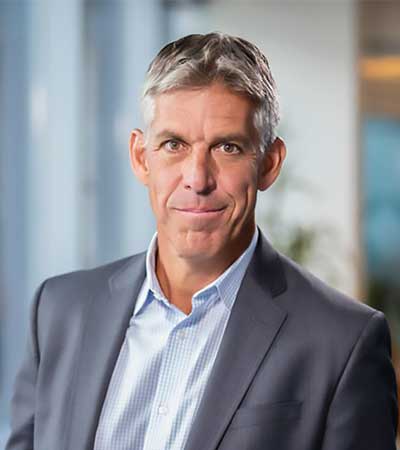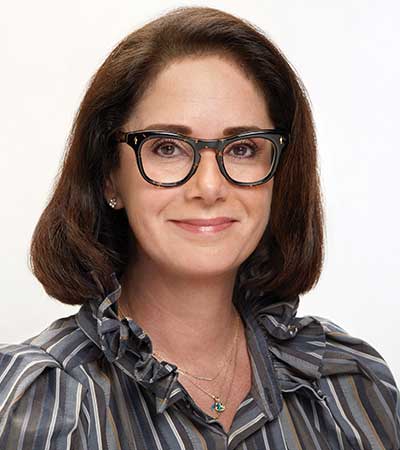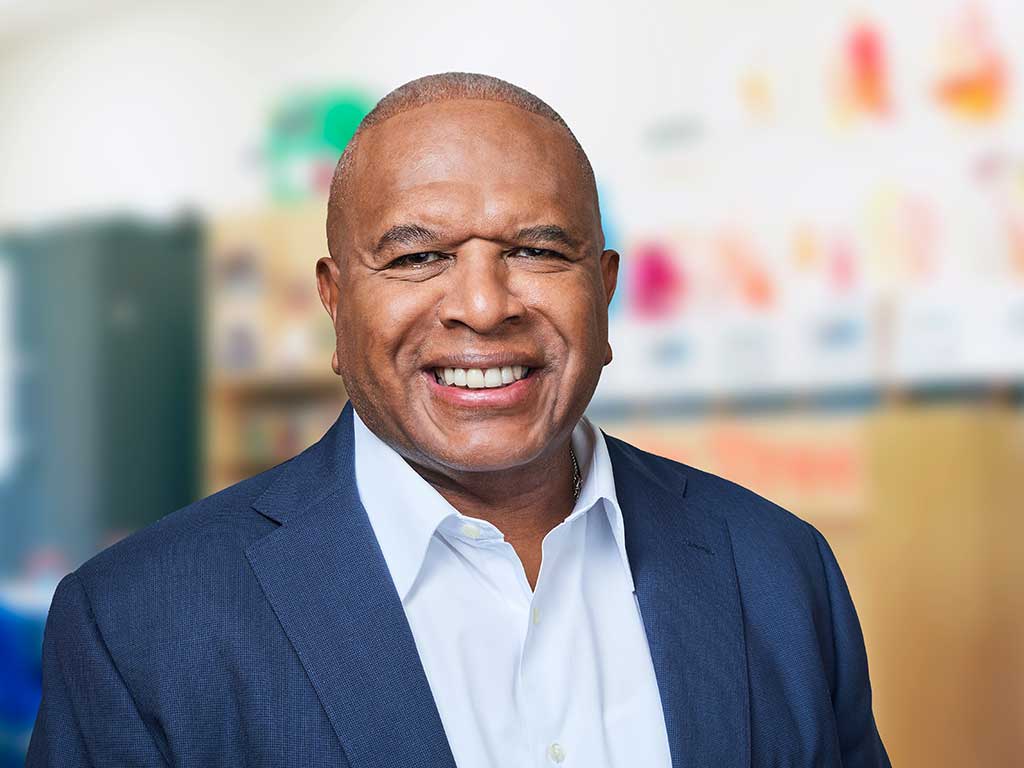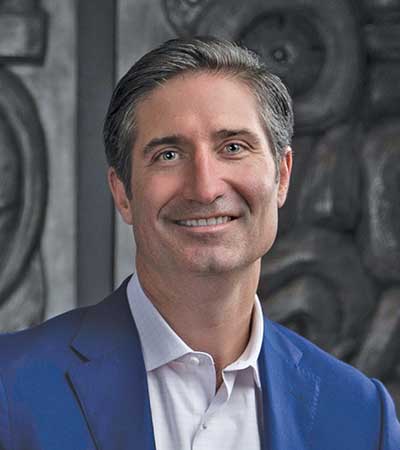Customer Retention: CEOs Share Strategies


CEOs have spent the last few years chasing suppliers, employees, price increases, digital transformation, health protocols and new customers. But that to-do list left out one crucial priority: existing customers. And now, amid a groggy economy, more companies are pivoting toward a concern that may be the most important of all.
Their intent is clear: 41 percent of CEOs polled by Chief Executive in July cited “shifting focus to consumer retention” as an action they had taken or considered taking over the previous three months, making it far and away their biggest expressed priority. “Speeding up automation/digital transformation” registered second, with 32 percent.
“The last couple of years were pretty good for business in the rebalancing after Covid, unless you were in commercial real estate,” says Stacy Kemp, executive lead of Deloitte’s CMO program. “But now, as things begin to contract, you’re finding that competitors are pursuing customers who are sitting on the edge of their loyalty.”
The classic formula holds that acquiring a customer costs up to six or eight times the outlay for retaining an existing one. Customers already in hand spend about 30 percent more and are about 50 percent more likely to try new or adjacent products and services than new customers, according to Deloitte. “Ten or 20 or 40 strategic accounts drive 80 percent of revenues for most organizations,” says Dave Irwin, president of Polaris I/O, a B2B customer-retention software platform.
Current business customers don’t need to be vetted, “so they’re an easier path to growth during tough times,” Irwin notes. And on the consumer side, digital technology via apps and loyalty programs has made it immensely easier for companies to engage—or reengage—existing customers.
Many companies slipped on retention efforts over the last few years. The apple-cart upset of the economy by the pandemic unmoored countless prior customer relationships, blew up traditional retention strategies such as business travel, and served to commoditize entire industries online. More than half of consumers surveyed by Accenture now say that company and brand names aren’t as important to them as they used to be.
But consider the premium-dog-food business for an example of the effectiveness of customer retention. Pet ownership boomed during Covid, and most Americans have kept their furry friends. New York City-based PetPlate helps hold on to purchasers by humanizing pet relationships with a “close-up of the month” testimonial about its subscription-based, high-grade products.
For Better Choice, another pet-food maker, the key to retention is strong handholding online and on the phone via email and text messages and continual promotional offers. “If you get them into the brand and they never hear from you, potentially they’re likely to switch,” says Scott Lerner, CEO of the Tampa-based provider of Halo brand dog food. “But if your product performs and they hear from you on a fairly consistent basis, they’ll stay with you over time.”
Some ways for CEOs and CMOs to regroup around customer retention:
• Leverage data. Software and data platforms allow “movement away from large global and national solutions to micro and curated experiences, mixing products, services and content, and being delivered at a much more regional, local and individual level,” Kemp says. “And harness all the third-party data out there to almost predict what customers are going to need before they need it.”
Then respond to those signals. “If a white paper by marketing has never been sent to this customer, you can send it, boosting the relationship,” says David Keane, CEO of software provider Bigtincan.
• Work with champions. In the B2B world, suppliers often enjoy “champions” inside companies. These days, “our champions are looking for information to defend the value the customer is getting,” says Mark McClain, CEO of provider SailPoint. “In our case, it’s security and efficiency. These champions now want us to come along behind them and show that value.”
• Adopt the customer’s perspective. “Customers are looking for vendors and suppliers who can help them solve their problems,” Irwin says. “They don’t care about your product; they care about who can align to solve their problems, and they’ll spend money on that vendor.”
Knock, for example, created a customer-advisory board made up of buyers of its rental-housing management software. “We rotate through our best customers and get an idea of their needs and whether we’re hitting the mark and [needs that are] up-and-coming,” says Jennifer Haas, chief revenue officer of the Seattle-based outfit. “So we’re constantly getting the pulse on what customers want.”
• Assume evolving needs. About two-thirds of consumers expect companies to address their changing needs in new ways, up from about half a year ago, according to Accenture. “Business leaders must focus on transitioning from a customer-centric to a life-centric approach, making connections between consumers’ ever-changing needs and environmental and social influences,” says Rachel Barton, lead of Accenture Strategy’s business in Europe.

We’re very fortunate, because we do something incredibly important: When your warehouse is down for an hour, we give you a call. So all of our relationships are with the CEO. When something goes wrong, everyone knows about it. And you’re only as good as your last reference.
But we get the product right, and we empower our associates. We actually understand how companies can drive a 50 percent reduction in inventory and increase customer service by 15 percent. It’s core to what we do. So when we engage, we are literally having a business-level discussion around the metrics they’re trying to drive. It’s not just, “How did the project go?”
Our retention philosophy is getting the product right in the first place. We architect the product roadmap from the customer’s income statement, back. We ask, what are the things we can add to our product that move those dials? If we create more value for the customer than the competition, everything else will take care of itself.
Renaldo Webb, CEO | PetPlate, New York City
About 80 percent of our weekly shipments are repeat customers. That only works if you don’t have a leaky bucket, and we’re working hard to make sure we don’t. So we make sure they have a great customer experience and a really outstanding product.
We’re also very data-centric. It’s kind of a simple way of viewing the world: How much do I pay Facebook and Google to acquire this customer, and then how many are coming in on a weekly basis? We group those as a cohort and look at their ordering patterns over time. We have a ratio for what we pay to acquire customers versus net revenues after discounts; what do we get as a profit for those user bases?
Alyssa Phillips, COO | HCR Wealth Advisors, Los Angeles
Client expectations have changed very dramatically over the last 10 years, so the type of service offering that was considered above average is now table stakes with the very dramatic advancement of fintech. We need to meet the level of transparency that customers are seeing in the rest of their lives. We blame those expectations on Bezos and Amazon.
Having subject matter experts to build out the technology for that has been crucial for us. We must have some vertical infrastructure in place to keep up with these demands and set ourselves up for future growth.
We track in our CRM platform, and we have had an uptick in the number of conversations we are having and increasing the share of wallet to take advantage of low-hanging fruit, and increasing our share of assets of our clients.

We provide writing and organizational products, and we’ve just celebrated our 35th anniversary. The company was founded on the idea that no sale is more important than a single customer. If you treat them the right way, they will stick with you.
There have been chapters in our history when we didn’t do that. Our customer service used to be outsourced, and it was a horrific experience. I brought it back when I came to the company a few years ago. We are no longer are open 24/7 for that, but customers are fine with that. The most important thing was not handing off that experience to someone else.
When we closed our last retail stores, we sent a handwritten card from me to our retail-only customers with a special offer. We managed to save a bunch of customers.
And in our regular BizRate surveys of customers we’ve begun asking if they have new-product ideas. One of our newest products, the carousel bookcase, came out of a customer request almost two years ago.
Mike Gaburo, CEO | Igloo Software, Toronto
In our business, customer success can be about playing defense more than offense. But we’ve flipped it and really trained ourselves to be proactive. If you were in CX, your role used to be to put out fires when they came up and get renewal every one or two or three years. But now we are more proactive, with lots of interconnected and reinforcing steps in training, organization, hiring and scorekeeping.
So with our customers, we now have a periodic touch through a monthly check-in or quarterly business review. That’s where the game gets played. We’ve changed the agenda or content of that session from one of, “What can we do for you, Mr. Customer? What’s on your list?” to where we’re saying, “Here’s what we’re seeing in how your people are interacting with your Igloo,” and what they should think about, given that.
Jeff Mezger, CEO | KB Home, Los Angeles
People are more willing to relocate with the work-from-home phenomenon. The home is the largest investment people typically make in their lifetimes, so if we do it the right way, we have a customer for life, and we get referrals and repeat business; if you do it the wrong way, it will haunt you and your brand forever, especially with the internet. About a quarter of our buyers are referrals from one of our homeowners.
We build custom homes, not spec homes. So it’s important to communicate with customers about their expectations and build the right relationship. Every week our local team contacts every customer, and we empower our teams to make real-time decisions on the ground, no expense spared. We have to do what’s right for the customer.
And we keep in mind that about 60 percent to 70 percent of transactions involve a Realtor. We have to take care of that third party so they’ll stand up for us, and we build a referral base in that community. We can’t give them referral gifts, but we can ask for referrals.
Dennis Maple, Chairman and CEO | Goddard Systems,
King of Prussia, Pennsylvania

So during Covid, we helped parents think through ideas for that period, and the stresses on them and children, with a series we put online called “Parenting Under Fire.” We also quickly came up with an online curriculum called “Goddard on the Go” for parents during Covid.
We have an educational advisory board. We went on a media tour with it. The first year, it was all about what to expect when you return to school in the fall of 2020. We’ve repeated the media tour for the next two years. It has received 28 million hits.
We work with our local owners on the safety and care of kids, which parents are especially concerned about. For instance, the owners themselves greet parents in the morning and afternoon at the front of the building, so parents can see the smiling face in charge of and responsible for their children.
Nick Falcone, CEO | Rentyl Resorts, Orlando
We rent homes that also have the components of resorts, with amenities, services and brand standards. Most people expect to come to a house and be on their own, but we make them feel like family. They may be used to going to an address and seeing a lock box, but instead we have a local “front desk” where they check in and are welcomed warmly. We go to the site with them, help with their luggage, tour the house—take it to a level they don’t expect.
We capture data on them verbally and online. So maybe they have a dining preference or a type of pillow they like. We also know what kind of marketing they engage in, such as photos or texts, and we can create a 360-degree profile of the customer. Instead of giving everyone the same advertisement or experience when they come onto the site, we can customize the experience. And you don’t have to ask.
We also are rolling out a loyalty app that goes way beyond most travel apps, which people look at only two or three times a year. We tie it to some of the biggest transactions in life, such as buying a car or a house, with benefits for those kinds of purchases. People can gain points through dining and entertainment and shopping venues with our partners and then get points in our loyalty program to maybe offset part of a down payment on a house. You’re doing normal transactions in life and getting credit for them.
Brian Niccol, CEO | Chipotle
Newport Beach, California

So we have to make sure the rice is great, the beans are great, the chicken is great, that every day the menu is terrific and that we do the best job of building the bowl the customer wants, with good speed. You can’t skip by that.
And then, to keep people engaged and the menu relevant in our culture, we can do two to three new menu things a year without screwing up the front line and our menu. We make sure those two or three items are things we can truly execute without damaging our core business or negatively impacting it.
Recently, we had a brisket variety and cauliflower rice, and they were good. We’ll probably do one other menu item this year. Think of us as a restaurant that does seasonal changes. We’re not in the limited-time-offering business.
David Meniane, CEO | CarParts.com
Torrance, California
About one-third of our revenues come from repeating customers, but the opportunity is there to get to much higher numbers. It will become more expensive to get new customers in the next few years, so we need to dedicate more resources to giving them a reason to come back.
That’s by focusing on value, not price; everyone can be lower-price. You don’t get customers to come back just by being low-price but by delivering an experience that aligns with their needs. So we do more consumer surveys than ever before to understand their priorities and needs and aspirations.
We also have completely reprioritized our technology roadmap around customer-centric initiatives. Historically, when we were in a pure-offense mode, we had a lot of projects on the roadmap that were nice or must-have. What we’re doing now and for the next few years at least is that anything that’s customer-centric or better for the customer takes priority over what’s better financially for the company.
Alan Farash, Vice President and General Manager | REV Recreation Group, Decatur, Indiana
It’s not just the RV that keeps our owners loyal and coming back, but the entire experience we surround them with. For those who’ve spent at least $500,000, for instance, we have a VIP Delivery Experience that gives owners unparalleled attention over two, three or four days. They personally receive their coach once it comes off the line, and then we pair them with a product specialist who walks them through every element of their RV. It’s a $10,000 add-on option.
And the Platinum Experience for them adds a dedicated team to answer questions, 24/7 support covering roadside assistance, a program we call Platinum Warranty Protection, an exclusive app, and access to Freightliner Elite Support for nationwide chassis repair and service.
We also have had an owner council since the beginning. Right now, the American Coach Association has more than 700 members, and they’re a tight-knit group who often travel together and attend yearly owner rallies.
Plus we listen to our owners and respond to their needs. That’s one reason we introduced some shorter floor plans in 2021. We know most owners aren’t traveling the country for 12 months straight; instead, they’re leaving a home base and going to a resort in Florida or Arizona. So our new American Dream 39RK gives them more of the amenities of home, like in the kitchen.
Tom Shorma, Founder | WCCO Belting
Wahpeton, North Dakota
In today’s world, you need to have relationships and regular communication, even if it’s more virtual now than in the past. These relationships are especially difficult right now because of supply-chain issues. Delays and lead times have driven our customers to place orders a lot larger, and a lot farther in advance.
So we ask: Are these orders something you want or something you need? It’s one thing if you’re moving your orders around because you’re afraid we won’t deliver in a timely manner. But it’s a different issue if you really need it to keep your production lines running.
We stay on top of this by adding time from our customer-service staff in communicating, and we’re putting a lot more calls on the shoulders of account managers. Instead of every one or two weeks, they’re literally on the phone every day trying to get a sense of and feel for what customers need.
And with hyperinflation, we also need to communicate our price changes: Some customers think that if they place an order today, it locks up the price for the next 12 to 18 months of lead time. But, sorry, that’s not the way it works in today’s world.


0

1:00 - 5:00 pm
Over 70% of Executives Surveyed Agree: Many Strategic Planning Efforts Lack Systematic Approach Tips for Enhancing Your Strategic Planning Process
Executives expressed frustration with their current strategic planning process. Issues include:
Steve Rutan and Denise Harrison have put together an afternoon workshop that will provide the tools you need to address these concerns. They have worked with hundreds of executives to develop a systematic approach that will enable your team to make better decisions during strategic planning. Steve and Denise will walk you through exercises for prioritizing your lists and steps that will reset and reinvigorate your process. This will be a hands-on workshop that will enable you to think about your business as you use the tools that are being presented. If you are ready for a Strategic Planning tune-up, select this workshop in your registration form. The additional fee of $695 will be added to your total.

2:00 - 5:00 pm
Female leaders face the same issues all leaders do, but they often face additional challenges too. In this peer session, we will facilitate a discussion of best practices and how to overcome common barriers to help women leaders be more effective within and outside their organizations.
Limited space available.

10:30 - 5:00 pm
General’s Retreat at Hermitage Golf Course
Sponsored by UBS
General’s Retreat, built in 1986 with architect Gary Roger Baird, has been voted the “Best Golf Course in Nashville” and is a “must play” when visiting the Nashville, Tennessee area. With the beautiful setting along the Cumberland River, golfers of all capabilities will thoroughly enjoy the golf, scenery and hospitality.
The golf outing fee includes transportation to and from the hotel, greens/cart fees, use of practice facilities, and boxed lunch. The bus will leave the hotel at 10:30 am for a noon shotgun start and return to the hotel after the cocktail reception following the completion of the round.